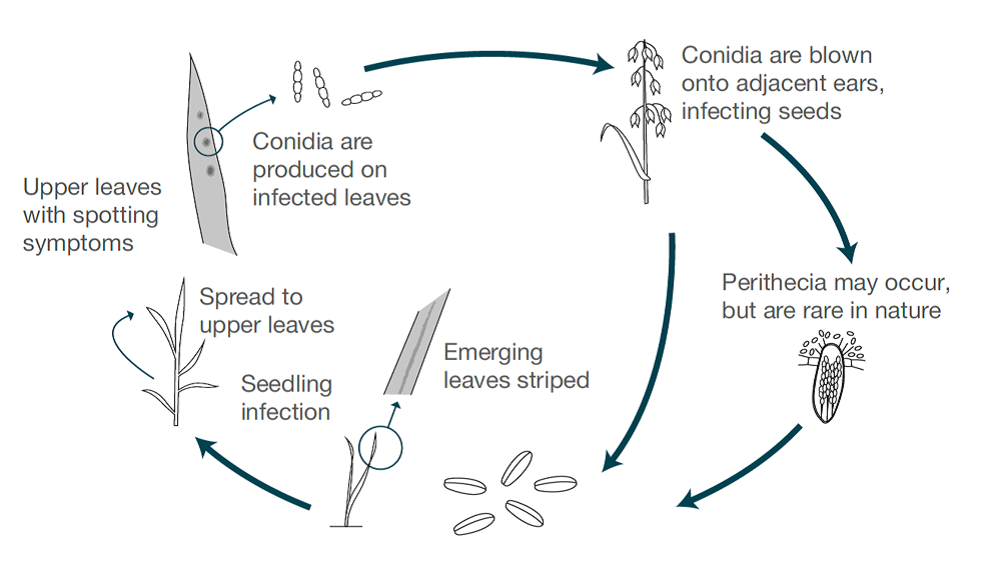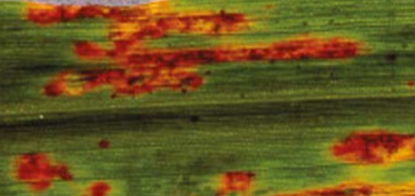Appearance and Lifecycle
Lifecycle
Leaf spot in oats arises from a seed-borne infection. Early infection can be identified from leaf stripes, this infection then spreads through spores to create the leaf spots on the remainder of the leaf. The grain can also become infected when the spores reach the ear, infected grain results in seedling death during emergence.

Typical Symptoms
The early stages of the disease appear as brown stripes which are short in length and surrounded by a thin purple line, this can be seen on the first 3 leaves. As the disease progresses it appears as red/brown spots with purple border on the leaves. The affected leaves may become curled, distorted, or stunted. After the infection has taken over defoliation can occur thus leading to reduced yield.
It's important to note that other factors such as environmental stress, herbicide injury, or nutrient deficiencies can cause similar symptoms, so a definitive diagnosis should be made by a plant pathologist.
Management Recommendations
Key Drivers of Risk
- Cool and wet conditions
Leaf spot is not uncommon in oats but it no longer poses a great threat to the crop. Large outbreaks of the disease could be seen where there is repeated home-saving of untreated seed.
Fungicide Choice
Fungicides will not be effective if caught later in the season and disease has spread to other part of the plant other than the leaf itself.
Cultural Control
Leaf spot in oats is most commonly found in stubble, hence it is important to completely till this into the soil deeply. This ground can only then be replanted with oats once the old material has rotted to avoid a continued disease cycle. A crop rotation every 3-4 years is also a greatly efficient method to help reduce disease.
Recommended Links
This page is also supported by funding from The British Society for Plant Pathology (BSPP).




